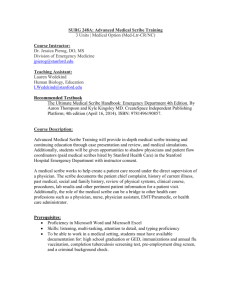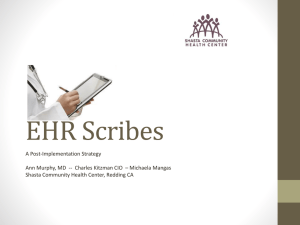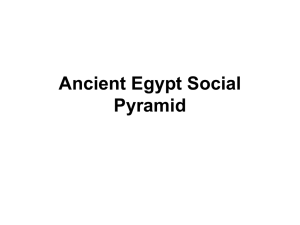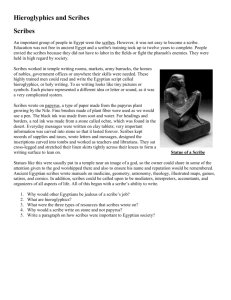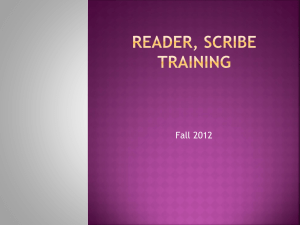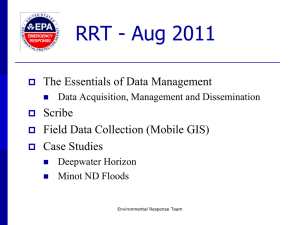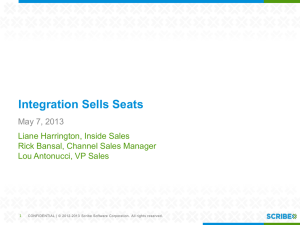Medical Scribe Certification
advertisement
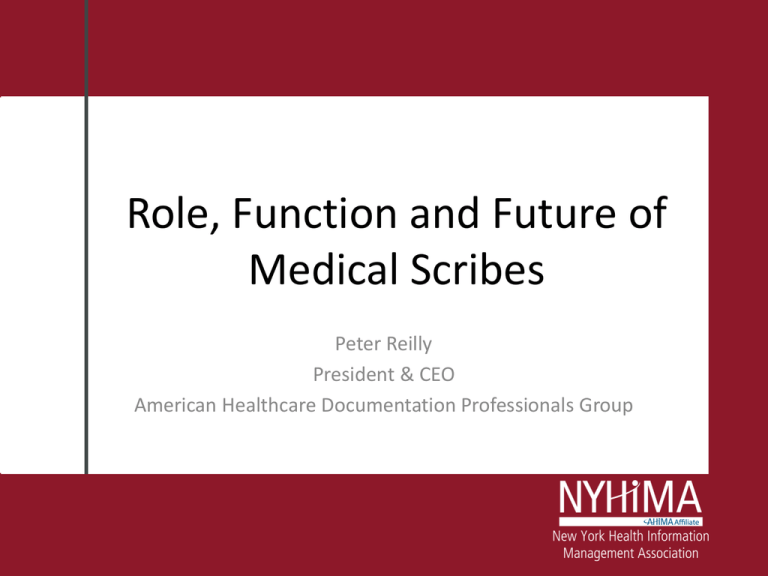
Role, Function and Future of Medical Scribes Peter Reilly President & CEO American Healthcare Documentation Professionals Group What is a Medical Scribe? An unlicensed individual hired to enter information into the electronic health record (EHR) or chart at the direction of the physician or licensed independent practitioner. Joint Commission What is a Medical Scribe? A medical scribe -- also known as a Clinical Scribe, ER Scribe, or ED Scribe -- is a trained medical information manager who specializes in charting physician-patient encounters in real-time during medical exams. A medical scribe can work onsite at a hospital or clinic, or from a remote, HIPAAsecure facility. Medical scribes who work at an offsite location are known as virtual medical scribes and normally work in clinical settings. By handling data management tasks for physicians in real-time, free the physician to increase patient contact time, give more thought to complex cases, better manage patient flow through the department, and increase productivity to see more patients. Wikipedia Where Do You Find Scribes? • • • • • • • Physician Practices Hospitals Emergency Departments Long-term Care Facilities Long-term Acute Care Hospitals Public Health Clinics Ambulatory Care Centers Who Do Scribes Work For? • • • • Healthcare Organizations Physicians Licensed Independent Practitioner Scribe Management Company (Contracted Service) Roles & Responsibilities • Core Responsibility: – Capture accurate and detailed documentation of patient encounter • General Duties: – Assist the provider in navigating the EHR – Respond to various messages as directed by the provider – Locating information for review (i.e. previous notes, reports, test and lab results) – Entering information into the HER as directed by the provider – Researching information requested by the provider Roles & Responsibilities • What Scribes Can’t Do: – Make independent decisions or translations while capturing or entering information into the EHR beyond what is directed by the provider. – Provide any type of direct patient care. Common Documentation Duties • • • • • • History of Present Illness Review of Systems (ROS) & Physical Exam Vital Signs and Lab Values Results of Imaging Studies Progress Notes Continued Care Plan and Medication Lists Benefits of Using Scribes • • • • • • • • • • • • Improved patient care, satisfaction, and HCAHPS scores Improved Core Measures documentation Keeping you up-to-date on Meaningful Use compliance issues More thorough, detailed, and complete documentation Greater throughput capacity Improved physician productivity Improved physician recruiting and retention capabilities Reduced provider overtime expenses Fewer patients leaving without being treated (LWOT) Greater legal protection with real-time documentation Greater physician workplace satisfaction Increased Revenue; Reduced Costs Scribe Training • • • • • • • • • Professionalism and Etiquette Medical Terminology Anatomy and Physiology Pharmacology and Diagnostic Imaging Scribe Fundamentals Medical Coding & Billing Electronic Health Records Case Presentations Medical Charting Scribe Certification • The American College of Medical Scribe Specialists (ACMSS) – Requires successful completion of a Certified Scribe Training Program • Certified Medical Scribe Apprentice (CMSA) – Upon graduation students passing the MSCAT qualify • Certified Medical Scribe Specialist (CMSS) – Once 200 hours of clinical employment experience is fulfilled Scribe Certification • The Medical Scribe Certification and Aptitude Test (MSCAT) verifies skills and knowledge in these areas: – – – – – – – – – Medical terminology and technical spelling Basic anatomy Basic coding HIPAA compliance Medico-legal risk mitigation EHR & computer knowledge Essential elements of documenting a provider – patient encounter Joint Commission Accountability Measures General knowledge of the roles and responsibilities of medical personnel • 100 questions on the MSCAT exam Joint Commission • In 2011, the Joint Commission released guidelines recognizing scribes: – Verbal orders may neither be given to nor by scribes. – Signing (including name and title) and dating all entries into the medical record is necessary. – Orientation and training must be given specific to the organization and role. – Competency assessment and performance evaluations should be performed. – If the scribe is employed by the physician, all non-employee HR standards also apply. – Scribes must meet all information management, HIPAA, HITECH, confidentiality and patient rights standards as all other hospital personnel Dates & Statistics • • • • • 1970s – Anecdotal reports of Medical Scribe use 2003 – Commercialization of Medical Scribes is launched 2005 – First Scribe Management Company (ScribeAmerica) 2011 – 1st Online Medical Scribe Training Program (AHDPG) 2013 – The American College of Medical Scribe Specialists Today, it is estimated that 15,000 medical scribes are in use and growing rapidly! Questions? Contact Information: Peter Reilly President & CEO American Healthcare Documentation Professionals Group 420 Boston Turnpike, Suite 107 Shrewsbury, MA 01545 Tel: 508.925.5400 Email: Peter.Reilly@ahdpg.com
